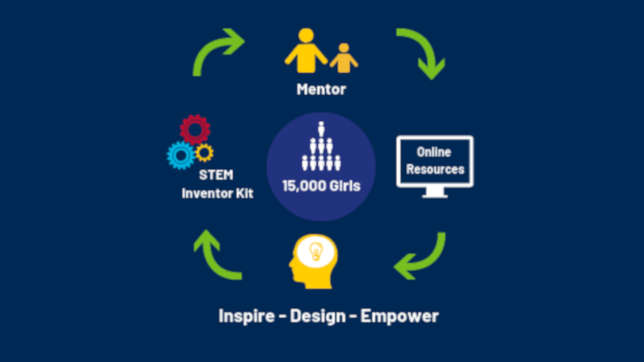UC Davis to Set Up 15,000 STEM Mentoring Pairs
- By Dian Schaffhauser
- 04/16/19

The University of California, Davis is hoping to connect 15,000 11-year-old girls in the state to STEM education in a new pilot. With an infusion of $1.1 million from the Walt Disney Company, the university's "Snap the Gap" program will recruit girls through nonprofit, after-school groups and other girl-serving organizations, industry partners and community organizations and then pair them with mentors in their local areas.
Mentors will spend 20 hours with girls over the course of numerous sessions to guide them through a structured innovation, prototyping and inventing cycle and expose them to careers in STEM by introducing them to female role models. When the one-year pilot is done, the university will evaluate its effectiveness for next steps.
According to the university, 56 percent of its science, technology, engineering and math students are female, compared to 35 percent in higher education nationwide and less than 25 percent in the workforce.
"UC Davis is strongly committed to improving this equation through hands-on STEM learning and mentoring from an early age," said Beth Broome, senior advisor to the provost, who leads the program for UC Davis, in a statement. "Research shows that individuals with mentors have improved academic, social and economic prospects -- and this becomes increasingly important as young women look to mentors and role models to help gain their confidence and increase opportunities in STEM fields."
The initiative grew out of the university's participation in Million Women Mentors-CA, of which Broome is a founding committee member. MWM-CA has pledged to increase the percentage of middle and high school girls who pursue STEM careers and boost the share of women staying in STEM careers through workforce mentoring.
Snap the Gap is also supported by littleBits, a company that produces consumer and education products tied to STEM.
Mentor applications are available through the Snap the Gap website.
About the Author
Dian Schaffhauser is a former senior contributing editor for 1105 Media's education publications THE Journal, Campus Technology and Spaces4Learning.